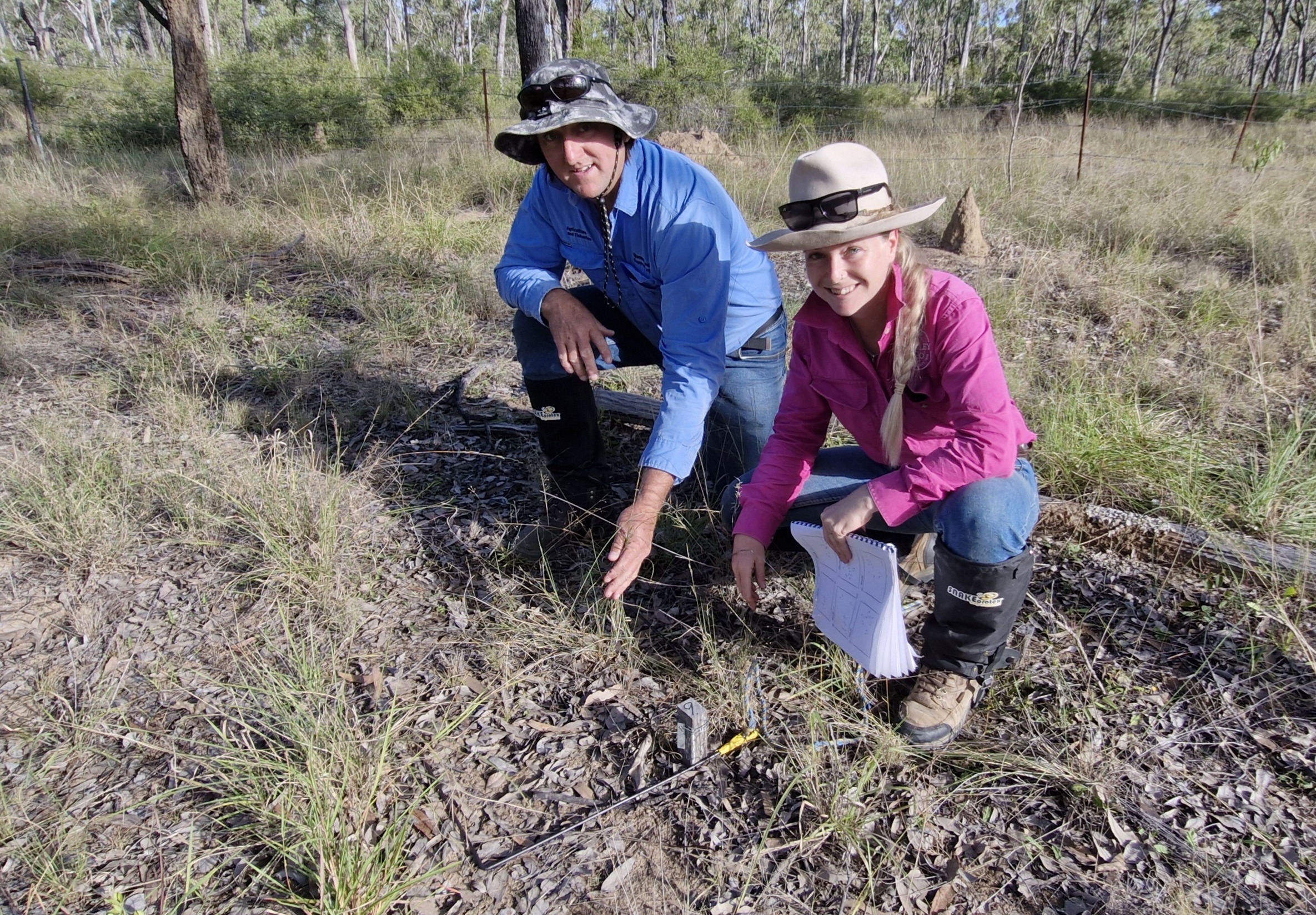Revitalizing Tired Paddocks: Insights from the Wambiana Grazing Trial
Paul Jones and Carly Harris at the Wambiana grazing trial spelling plots, November 2012.
Are you managing underperforming paddocks and seeking effective strategies for rejuvenation? Research from the long-term Wambiana grazing trial provides straightforward solutions.
The focus is not on complex technologies or hefty investments—it’s primarily about resting your land or “spelling” paddocks. This restorative practice involves giving grasslands a break during the growing season, which significantly improves pasture conditions over time.
Initiated in 2011 by the late Paul Jones, the trial was designed to discover the most effective ways to recover poor (C) condition native pastures, using various spelling regimes under distinct stocking rates. The research notably targeted desert bluegrass (Bothriochloa ewartiana), a vital native grass in forest regions.
Trial Methodology
The study was conducted under practical grazing conditions—both heavy and moderate stocking—using plots that were categorized as:
- Not spelled
- Spelled for the early or full wet season, with variants such as:
- Every wet season
- Every second wet season
From 2011 onward, hundreds of individual grass plants were tagged and monitored for 14 years, experiencing a range of weather conditions, from severe droughts to plentiful wet seasons. Though Paul Jones passed away in 2024, the trial continues under the leadership of Brad Hough, who has been assessing individual grasses across different treatments this year.

Key Findings
Research revealed that while rainfall is significant, the recovery of pastures hinges on wet season spelling combined with an appropriate stocking rate. The findings included:
- Heavy stocking exacerbates drought effects: During the drought of 2014-15, around 70% of grasses perished under heavy stocking as opposed to 40% under moderate stocking.
- Initial recovery was sluggish: Despite resting the land, substantial recovery didn’t occur in the first eight years. However, once seasonal conditions improved, recovery sped up significantly, particularly under moderate stocking with annual wet season rests.
- Spelling under heavy stocking showed no benefits: Resting paddocks while consistently overgrazing prevented recovery.
- Established plants are crucial: Most recovery stemmed from existing desert bluegrass plants instead of new seedlings, which struggled to mature even in favorable conditions. Protecting established perennials is essential.
- Full wet season spelling proved most beneficial: A shorter, early-season spell was also effective during the vulnerable stages of plant growth.
Takeaways for Grazing Managers
- Optimize stocking rates: High stocking rates, especially during droughts, can decimate native grasses and diminish long-term productivity.
- Implement regular wet season resting: Annual wet season spelling under moderate stocking yielded the best recovery, suggesting rotational grazing methods are advantageous.
- Exercise patience: Although initial recovery may be slow, it will accelerate over time, resulting in sustainable benefits.
- Care for established grasses: Preserving current plants is vital for long-term recovery, particularly through challenging climates.
Actionable Steps
- Start with the weakest paddocks: Commit to spelling these areas during wet seasons.
- Monitor your key perennials: Observe the response of desert bluegrass and other vital species.
- Adjust stocking rates: Modify rates across other areas to allow one section to rest properly.
- Think long-term: Remember, recovery is a long-distance endeavor. The benefits include enhanced ground cover, improved carrying capacity, better production, and increased resilience against drought.
For further information, please reach out to Brad Hough at brad.hough@dpi.qld.gov.au or call 0499 850 158.
This initiative is part of the Queensland Pasture Resilience Program, a collaboration between the Department of Primary Industries, Meat & Livestock Australia, and the Australian Government through the MLA Donor Company.
This article was first published on FutureBeef.
Feel free to copy and paste this structured HTML code into your WordPress site. The content has been reformatted for clarity and reader engagement, conforming to standard web practices.



